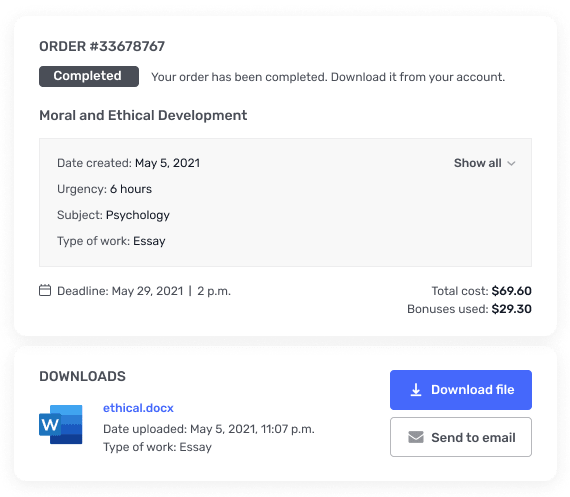MGEB06 -Macroeconomic Theory and Policy Assignment 1
MGEB06 – LEC 01-04Macroeconomic Theory and PolicyAssignment 1Instructions: You may submit an individual or group assignment. If you submit group assignment, there should be no more than FIVE students in yourgroup (from any of the sections of the course this term) and you must submit just ONEcopy. WORK WITH STUDENTS BELONGING TO THE SAME GROUP ONLY. A title page MUST be attached with your assignment; it MUST include your name(s)and student number(s). Staple your assignment (Paper clips are not accepted). A PENALTY OF 10% OF THE TOTAL MARKS WILL BE IMPOSED IF YOU DONOT HAVE A TITLE PAGE OR DO NOT STAPLE YOUR ASSIGNEMNT. Label your graph(s); otherwise, marks will be subtracted. No credit will be given if you do not show your work. Your answer should be structured in a way such that those know little about economicswill have no difficulty in understanding your argument/answer. Total marks: 100 points.Question 1 (25 points) – Chapter 2The following tables provide the economic data for an economy.Year201320142015Price Quantity Price Quantity Price QuantityBread1.86000001.95500002550000TV sets299150002501750020017500Computer 1500 75000135065000120065000Ice Wine253250027.5330003230000Machinery 9500 No. of employedNot in the labourforceAdult populationTotal population 10000 10250 15000 11000 15000 2013230000 2014222000 2015227500 130000380000450000 140000380000480000 132500382500535750 2016Price234914003412500 Quantity56500020000775003450015000 2016255500130000410000550000 Additional information about this economy: The economy produces bread, computers, ice wine and machinery. All the TV sets consumed are imported goods. Households consume bread, TV sets, computers and ice wine.MGEB06 Assignment 1 (Winter 2017) 1 Every year 30% of the bread production is sold to foreign consumers, while the remaining isbought by domestic consumers.In any given year, firms buy 50% of the computers and consumers purchase the remaining50%.In any given year, firms purchase all of the machinery.The government has chosen 2013 as the base year. a) Compute the nominal GDP, real GDP and GDP deflator for 2014, 2015, and 2016. (7 points)b) Find the CPI for 2014, 2015, and 2016. (4 points)c) From 2014 to 2016, did CPI and GDP deflator move to the same direction? If not, why?Explain. (4 points)d) Calculate the unemployment rate and the labour force participate rate for 2014, 2015, and2016. (5 points)e) From 2015 to 2016 the number of unemployed workers increased and the unemployment ratefelt. Why is it possible for the number of unemployed to increase at the same time theunemployment rate falls? Explain. (5 points)Note: Put your final answers for parts (a), (b) and (d) in the following table. The table isreproduced on page 5 of this assignment. You must submit that page with your assignmentfor grading. Also, on separate page(s), show your work. You are required to do both;otherwise, you will receive a grade of zero for this part of the question.201420152016Nominal GDPReal GDPGDP deflatorCPIUnemployment rateLabour force participation rateQuestion 2 (30 points) – Chapter 3A closed economy can be described by the long-run classical model:Y = 5K1/3L2/3C = 12500 + 0.75(Y–T) – 325rI = 25000 – 500rIn this economy, there are two productive factors, K and L and both factor inputs are fullyemployed. The stock of capital and the supply of labour are equal to 8000 and 3375 respectively.Initially, the government collects one-fifth of the long-run level of output from households astaxes and it runs a balanced budget.Note: r represents the real interest rate and is measured in percentage points (for example, if r =10, then this is interpreted as r = 10%). Keep your answers to 4 decimal points if needed.a) Compute the long-run equilibrium levels of consumption, investment and real interest rate.Also, find the real wage for labour and real rental price of capital. (6 points).MGEB06 Assignment 1 (Winter 2017) 2 Now, suppose households suddenly become more optimistic about the future such thatautonomous consumption increases by 13.2%.b) What are the new long-run equilibrium levels of consumption, investment, and real interestrate? Compute the new long-run equilibrium real wage rate for labour and real rental price ofcapital. (6 points)c) Show your answer for parts (a) & (b) in three diagrams (that depict the loanable fundsmarket, the labour market, and the rental market for capital). Be sure to identify whichpoints on your diagrams are the equilibria for part (a) & (b) respectively. No writtenexplanation is required. (6 points)d) Suppose the government finds the change in the long-run equilibrium level of investment inpart (b) undesirable and wants to use government spending on goods & services to increasethe level of investment by 800 (compared to the one in part b). Can the government achievethis goal? If yes, find the level of government spending that could achieve this goal. Whathappens to the government budget balance? If not, explain why. (6 points)e) (Ignore part d) Suppose instead the government finds the change in the long-run equilibriumlevel of real interest rate in part (b) undesirable and wants to use government spending ongoods & services to set it to 36%. Can the government achieve this goal? If yes, find thelevel of government spending that could achieve this goal. What happens to the governmentbudget? If not, explain why. (6 points)Question 3 (15 points) – Chapter 3In this question, we will assume the province of Alberta is a closed economy. The collapse of oilprices has drastic impact on Alberta’s economy. It lowers firms’ desirability to purchase new oilrefinery equipment. In addition, seeing some firms have shut their production and jobs aredifficult to find, some of the workers who are previously employed in the oil production industrystop seeking jobs. According to the long-run classical model, what happens to the equilibriumlevels of output, real interest rate, and investment in Alberta? What happens to the real rentalprice of capital in the province? Explain your answer with the aid of TWO diagrams – one forthe loanable funds market and one for the rental market for capital.Question 4 (25 points) – Chapters 3, 7 & 8Answer the following questions and each part of the question is NOT related to other parts of thequestion.a) “The economy has a labour force growth rate of 6%, and it is 4 percentage points higher thanthe growth rate of physical capital. The level of total factor productivity is increasing at2.75%, while the velocity of money is increasing at a rate of 1.25%. If the central bankwants to obtain a target rate of inflation at 2%, then it should set a monetary growth rate of9% if the capital’s share of income is 40%”. True/False/Uncertain, explain. (6 points)Note: All growth rates are annual rates.b) The economy of Canada is a closed economy with a population that grows by 2% per year,has a 6.5% depreciation rate of capital employment contract, and saves 35% of its income.Suppose the Prime Minister is able to get the rate of labour augmenting technical change tooccur at a rate of 1.5% per year. The aggregate production function is given by the following MGEB06 Assignment 1 (Winter 2017) 3 expression: 0.5 0.5 , where Y, K, L & E have their usual meaning as in chapter 8 Y 4 K ( LxE)(& in class).Determine the steady state levels of capital per effective worker, output per effective worker& consumption per effective worker. (3 points) Is this steady state the so-called Golden Rule steady state? If so, explain why. If not,explain why. (2 points) If the steady state for this economy is not the Golden Rule steady state is it possible forthe government to move the economy to the Golden Rule steady state by altering thepopulation growth rate? Explain why or why not. (4 points)c) Noted economic expert Dr. Melonhead recently stated that Canadians will face a decliningstandard of living in the coming future (very long-run) due to the projected decliningpopulation (i.e. negative growth rate of the population). Use the Solow model to determine whether Melonhead’s claim is true, false or uncertain.Assume that Canada is a closed economy. Explain, and show your answer using bothwords and a Solow model diagram. (5 points)d) Use a single carefully drawn and labelled Solow model diagram and words to explain whichis better for the very long-run equilibrium (i.e. steady state) of the economy a higher savingrate or a lower depreciation rate of capital. (5 points) MGEB06 Assignment 1 (Winter 2017) 4 Submit this page for grading; otherwise you will receive a grade of ZERO forQuestion 1 parts a, b & d.2014 2015 2016 Nominal GDPReal GDPGDP deflatorCPIUnemploymentrateLabour forceparticipation rate MGEB06 Assignment 1 (Winter 2017) 5




